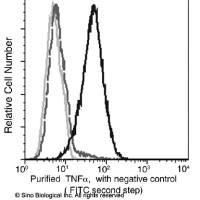Analysis of In Vivo Transcription Factor Recruitment by Chromatin Immunoprecipitation of Mouse Embryonic Kidney
互联网
互联网
相关产品推荐

InVivoMAb 抗小鼠 CD274/PD-L1/B7-H1 Antibody (10F.9G2),InVivo体内功能抗体(In Vivo)
¥2700

TNF-alpha / TNFA / TNFSF2 Antibody, Mouse MAb | TNF-alpha / TNFA / TNFSF2 鼠单抗
¥800

Recombinant-Mouse-Kidney-mitochondrial-carrier-protein-1Slc25a30Kidney mitochondrial carrier protein 1 Alternative name(s): Solute carrier family 25 member 30
¥11368

Recombinant-Human-Zinc-transporter-9SLC30A9Zinc transporter 9; ZnT-9 Alternative name(s): Human embryonic lung protein; HuEL Solute carrier family 30 member 9
¥13832

Cell Cycle Analysis Kit (with RNase)(BA00205)-50T/100T
¥300
相关问答
推荐阅读
Chromatin Immunoprecipitation Assays: Analyzing Transcription Factor Binding and Histone Modifications In Vivo
PAP-LMPCR: An Improved, Sequence-Selective Method for the In Vivo Analysis of Transcription Factor Occupancy and Chromatin Fine Structure
Nucleosome Remodeling Factor NURF and In Vitro Transcription of Chromatin

